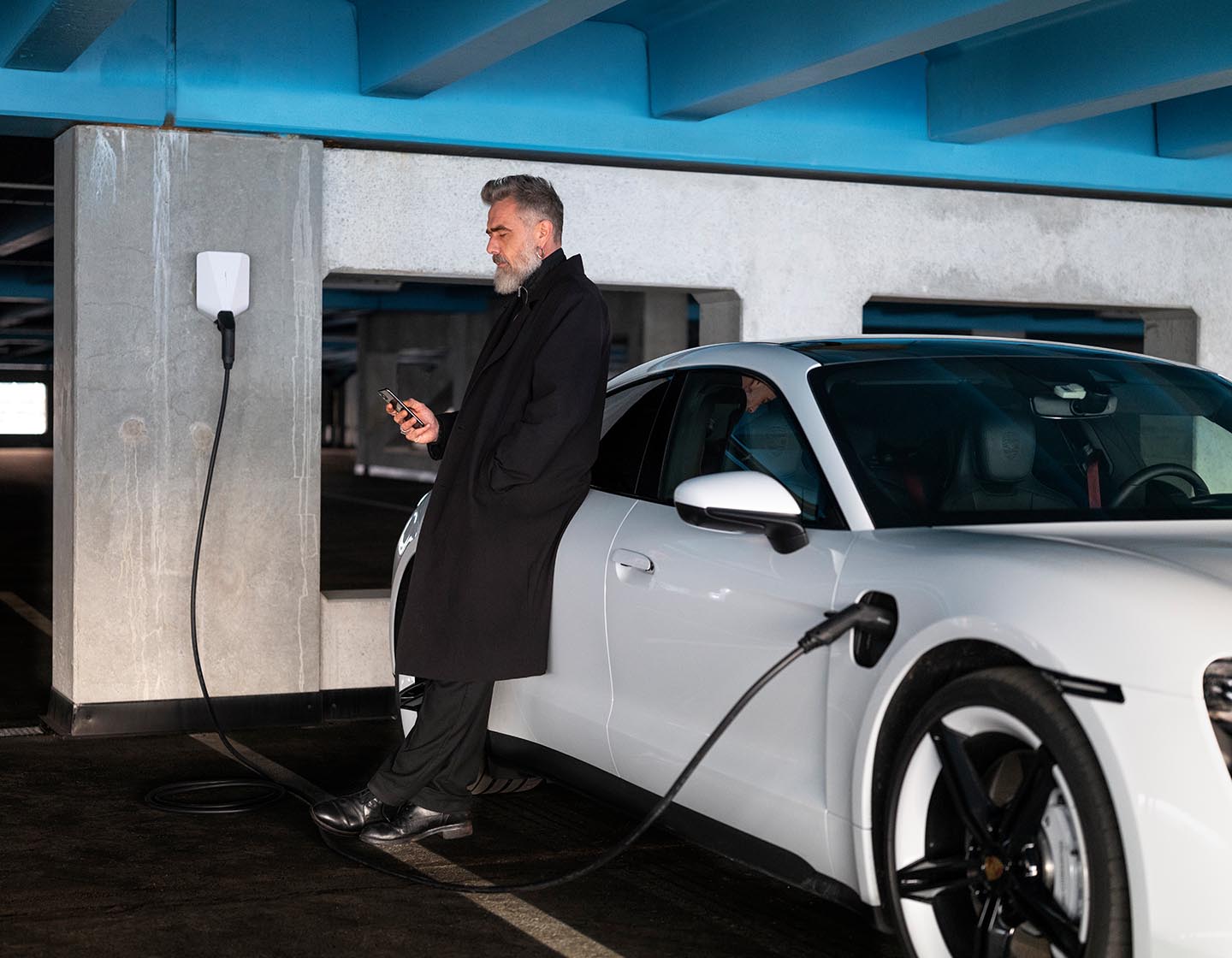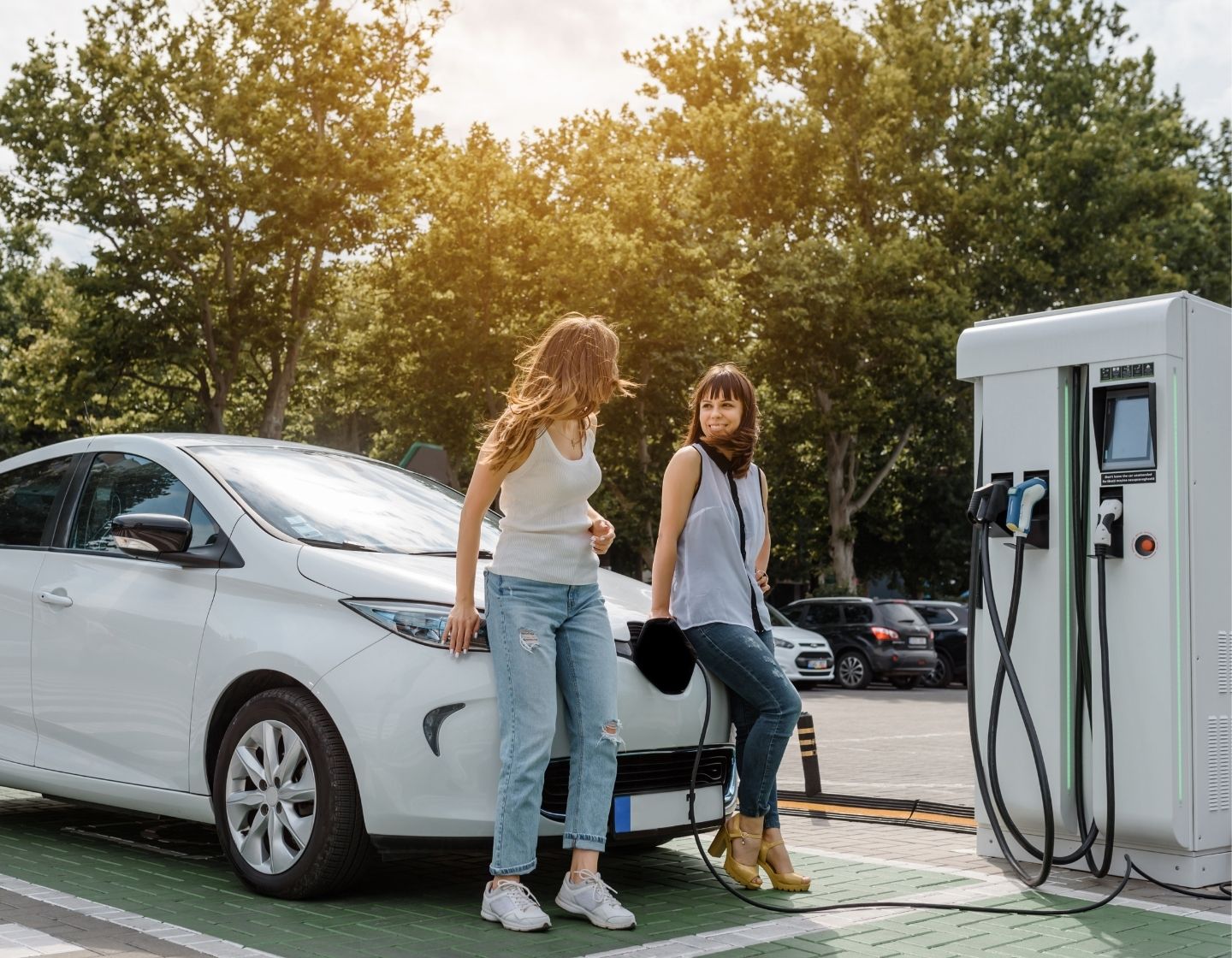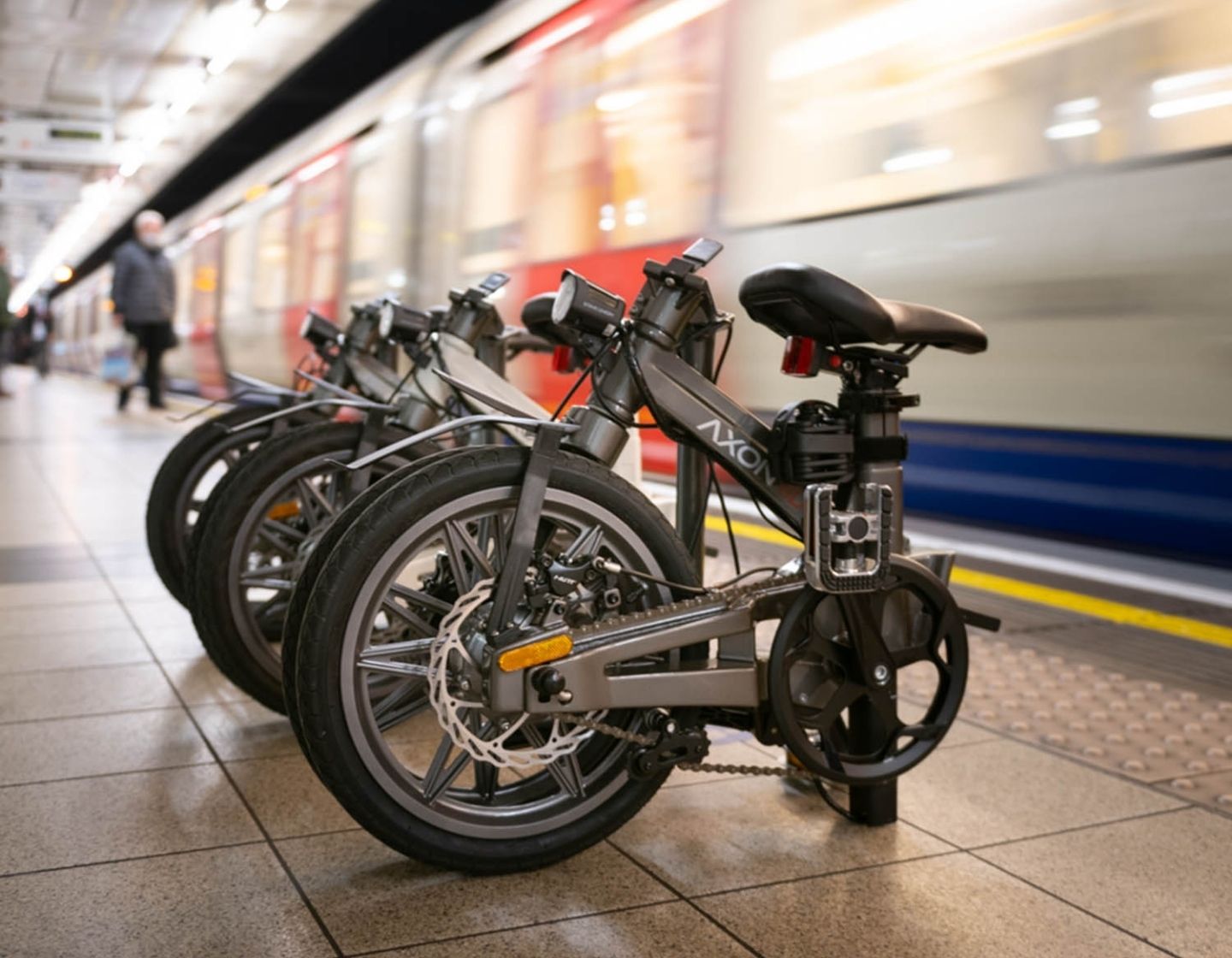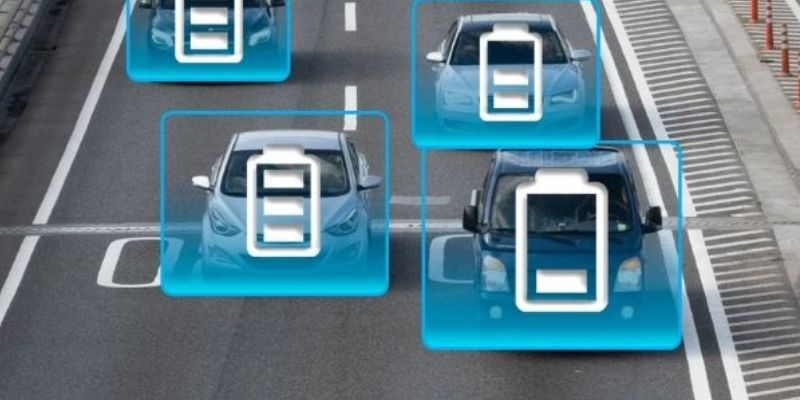Electric power options for clean travel
Whether you choose to invest in an electric vehicle or an electric bike, the benefits for both you and the climate are truly great.
All you need to know about EVs
Buying an electric vehicle (EV) is a smart long-term transport choice that is about much more than just caring for our planet and now is a great time to move to electric. The lifetime cost of EV ownership is actually cheaper than the polluting petrol and diesel cars, with much lower maintenance costs and other benefits.
More and more drivers are ditching internal combustion engine (ICE) models for cleaner, greener vehicles powered by battery. A new EV is registered every 60 seconds, according to data from the Society of Motor Manufacturers and Traders (SMMT).
The rapid rise in electric vehicles (EVs) on UK roads is partly a response to soaring diesel and petrol prices, and the commitment by government to push for 80% of new car sales to be EV models by the end of the decade. There will be a total ban on sales of new ICE models in 2035.
Economical EVs
While the initial cost of an EV is currently high, it’s a logical move. The costs of EV lifetime ownership are already cheaper than fossil-fuel vehicles, and rapid reduction in battery costs mean that EVs should have a similar price to ICE models within four years.
EVs have fewer moving parts and need much less maintenance, including no oil changes and practically no part replacements. It’s a bonus for domestic drivers as well as businesses because the vehicles spend more time on the road and less time in the garage.

Emissions reduction
The switch to EVs is part of the UK’s strategy to meet net zero climate targets – cars and taxis accounted for 16% of UK emissions in 2019. A recent study found that light-duty EVs had 64% lower total life greenhouse gas emissions than an internal-combustion-engine.
Charging anxiety
Ranges on EVs vary depending on budget and battery size, you can purchase vehicles with ranges from 100 miles to ranges in excess of 400 miles. Like the internal combustion engine improved over years of manufacturing, EV motors will become more efficient, and the battery technology will improve. It’s also worth bearing in mind that over 70% of UK drivers drive less than 25 miles a day.
The government has recently brought in a new law that requires new homes and buildings in England to install EV charging points. It hopes that this will see 145,000 charging points being installed across the country each year. New-build supermarkets, workplaces and buildings undergoing major renovations will also come under the new law.
With the increased capacity in the public charging network, the public perceptions around charging anxiety are now starting to dissipate.

Financial support
The Office for Zero Emission Vehicles (OZEV) provides the EV chargepoint grant for flat owner-occupiers and people living in rented properties. It is for anyone who owns and lives in a flat, or rents any residential property. The grant covers up to 75% of the cost to buy and install a chargepoint socket, up to £350 per grant. The home must its own private off-street parking space and the applicant needs to own a qualifying vehicle.
While the Homecharge Grant Scheme is no longer available for charge point installation, the Workplace Charging Scheme (WCS) covers nearly all businesses. It is available to qualifying businesses, charities and public sector organisations who can apply for vouchers of up to 75% of the costs up to £350 per EV charging point, up to a maximum of 40 across all sites. Franchisees are eligible, with maximum of 10 from each franchise that can apply.

Tax breaks
The lower Benefits in Kind (BiK) rates for EV drivers compared with internal combustion engine (ICE) vehicles mean that the company-car tax on electric vehicles is just 2% until 2025 – a big saving compared with BiK tax rates on fossil-fuel cars ranging up to 31% and more.
Also, the Super Deductions scheme allows companies to cut their tax bill by up to 25p for every £1 they invest, so firms can move to EV at less cost but also can harness free renewable energy through solar panels to help charge their vehicles. Companies investing in EV chargers can claim a 130% super-deduction capital allowance. The scheme will run until March 31st 2023, so the pressure is on to implement without delay.
Types of EV
A Battery Electric Vehicle (BEV) or Fully Electric Vehicles, is a model where the only means of propulsion are through the battery and electric motor.
A Plug-In Hybrid Vehicle (PHEV) has an internal combustion engine along with a small battery – normally around 10kWh – which is charged through a wallbox. PHEVs have an average fully electric range of around 20-25 miles.
Mild Hybrid Vehicles are fully powered by internal combustion engines, supported by a small 48v battery for acceleration and cruising, and they cannot drive on electric power alone.
The number of EV models, both medium and heavy-duty, should double over the next two years, so every need should be covered, while rapidly expanding public charging networks, ultra-fast charging, and smart chargepoint solutions will make any range anxiety a distant memory.
For many consumers, the “fuelling” choice will be Fast Charging – 7-22kW AC charging via a traditional EV wallbox. There are faster charging point options, currently being deployed in commercial settings. These Rapid Charging units deliver DC current directly, usually between 43-350kW in capacity.

EV charging
EV batteries are charged usually through a charging point installed at home, at the business premises or on public streets, petrol stations and motorway services. The EV charger supplies standard AC current to the vehicle’s onboard charger, which converts the power to DC, allowing the battery to charge.
These Alternating Current (AC) charging stations can charge up to 22kW to the on-board vehicle charger. Alternatively, there are Direct Current (DC) charging stations which supply up to 150kW current direct to the vehicle battery.
There are two main types of cable used to charge EVs. Type 1 is a socket type, mostly found on vehicles from Asia such as Nissan. Type 2 is mostly used with European brands such as VW and BMW.
Buying a e-bike
Folding electric bikes and electric push bikes are also known as e-bikes, and they’re the perfect alternative to cars. They offer the same benefits as normal bikes such as exercise, money-saving, energy-efficiency and emission-free transport but with added speed and innovative technology.
The average car produces 0.28kg of carbon per mile and even more for diesel cars. But if you travelled by electric bike just four miles every day of the year, you’d save enough carbon dioxide to fill half a decker bus.
Other advantages of electric bikes include their range, meaning you can ride for longer between charges, they’re built to assist climbing hills and it makes cycling in bad weather conditions easier. Additionally, they can help individuals that need a little more help, perhaps due to asthma, knee pain or heart conditions.
Whether you commute to work, cycle to school or collect your food shopping – electric bikes can make your journeys easier. Most cities in the UK now have air zones to combat climate change and transport pollution. With cycle lanes and cycle schemes, electric bikes are more affordable and likely to change the face of transport in the years to come.
We’ve covered the benefits of electric bikes but before we dive into the best electric bikes for sale, let’s answer all of your FAQs!
Are electric bikes legal in the UK?
Yes, electric bikes are legal in the UK for those over the age of 14. However, according to gov.uk, to be classified as an Electrically Assisted Pedal Cycle (EPAC), the motor must have a maximum power output of 250W and should not be able to propel the bike when it’s travelling more than 15.5mph.
It must show either the power output or the manufacturer of the motor. It must also show either the battery’s voltage or the maximum speed of the bike.
Any electric bike that does not meet this rule is classed as a motorcycle or moped which needs to be registered and taxed. You’ll also need a driving license and you must wear a crash helmet.
How do electric bikes work?
Electric bikes are just like normal bikes except they have an electric motor fitted to assist with peddling and a rechargeable battery. This means you still reap the benefit of exercise, but with some added help.
The battery is usually attached to the frame and simply needs to be plugged into the mains like an electric car or mobile phone to charge it between rides. The great thing is that even if you run out of charge on your journey, you can use it like a regular bike! Batteries can last for 25 miles to 100 miles, depending on what settings you cycle, if it’s fully charged and how powerful the motor is.
Motors can be fitted in various places such as within the front hub or rear hub. The main purpose of the motor is to provide more torque as you pedal. In simple terms, the fancier the motor, the more torque it offers and the more torque you have, the more powerful the bike is.

How much are electric bikes?
It’s evident that electric bikes are more expensive than traditional bikes, but their innovative technology means you’re paying for what you get. Generally, electric bikes start at £700 and can range all the way up to £10,000. But you certainly don’t need to spend that much to find a decent model.
How fast do electric bikes go?
As we covered earlier, electric bikes cannot go faster than 15.5mph otherwise you would need a license. However, you can increase the speed by peddling faster yourself!
Do you need a license for an electric bike?
No, you don’t need a license to ride an electric bike and it doesn’t need to be registered, taxed or insured. Just like normal bikes, electric bikes are subject to the same rules such as it’s legal to use cycle paths or cycle on the road. Similarly, it’s not legal to ride an electric bike on the pavement.
Electric bikes give you the extra oomph you need to get to your destination without the effort. No more arriving to work a hot mess dripping in sweat! By taking advantage of the assisted peddling and traffic-free cycle lanes, you can arrive quickly and safely.
Conclusion
EVs are going to play a big role in the decarbonisation of transport – paving the way for a cleaner environment and reducing the pressures from CO2 emissions. In the same way, e-bikes will contribute to a greener future – and one that’s more healthy too.

